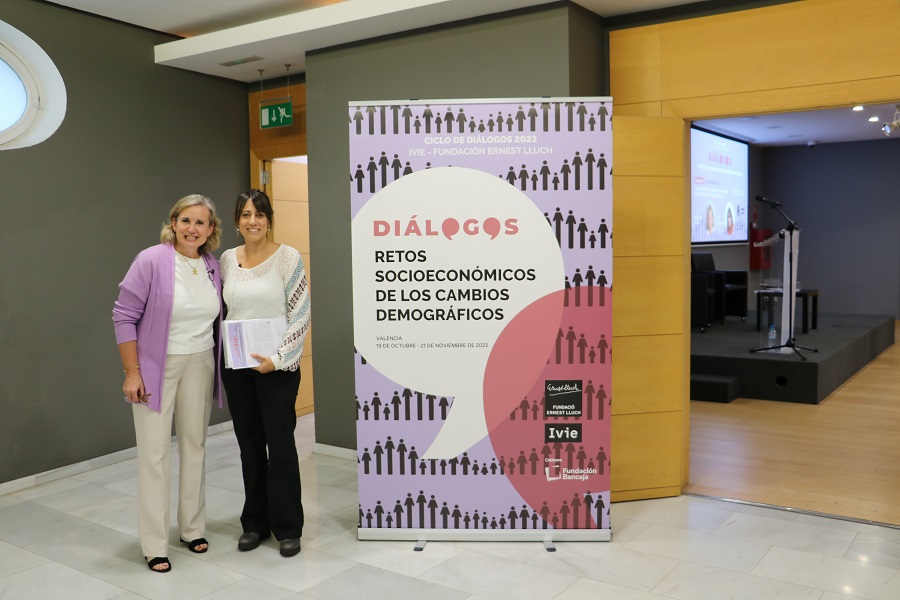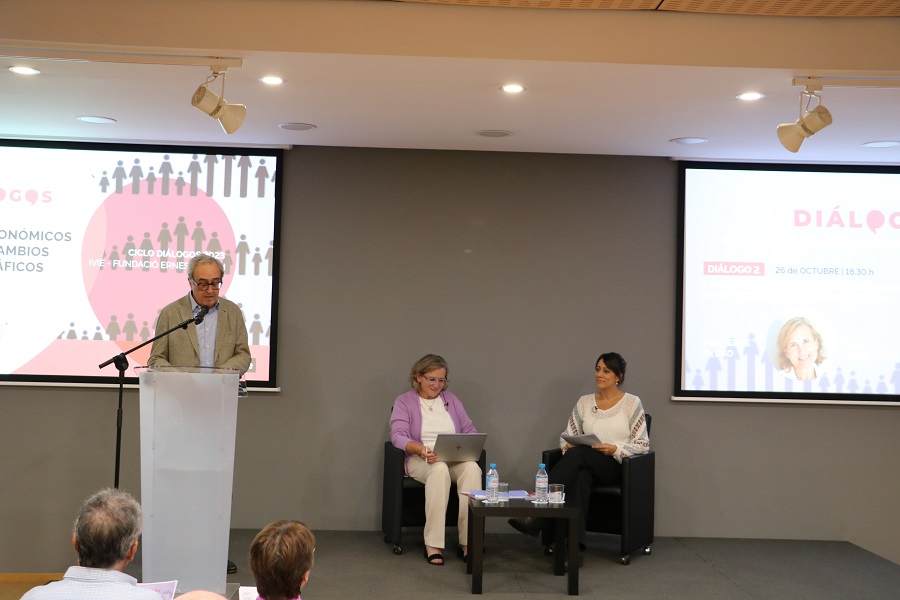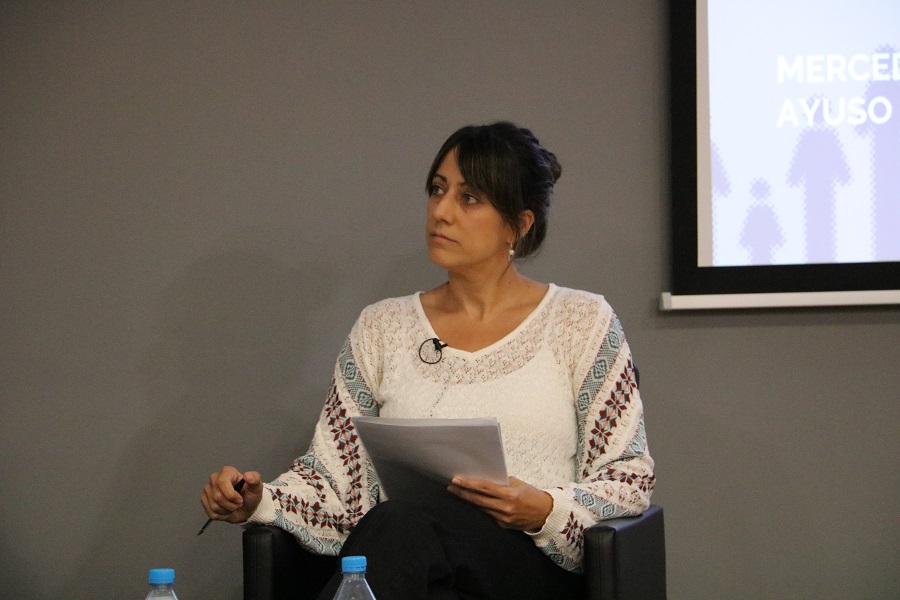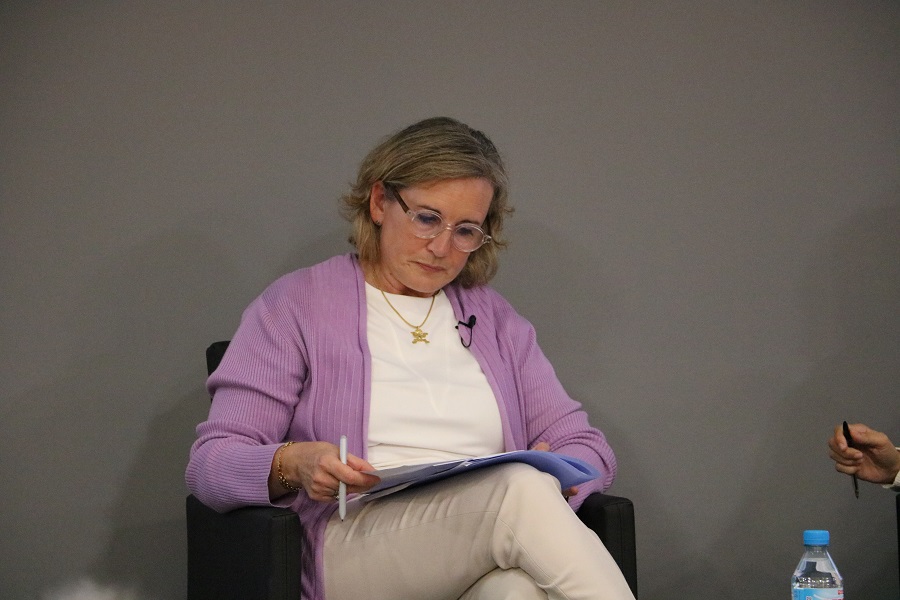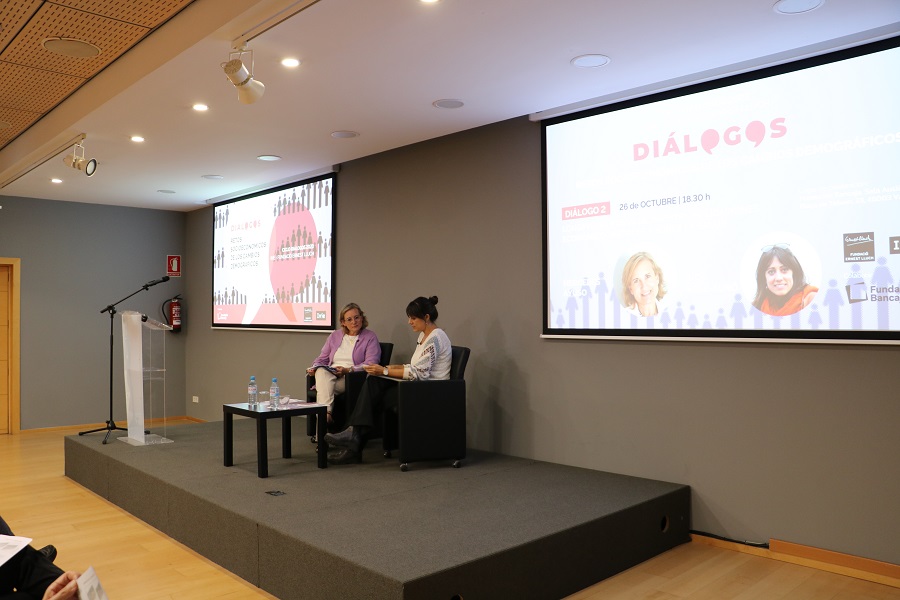Esta web utiliza cookies para que podamos ofrecerte la mejor experiencia de usuario posible. La información de las cookies se almacena en tu navegador y realiza funciones tales como reconocerte cuando vuelves a nuestra web o ayudar a nuestro equipo a comprender qué secciones de la web encuentras más interesantes y útiles.
News
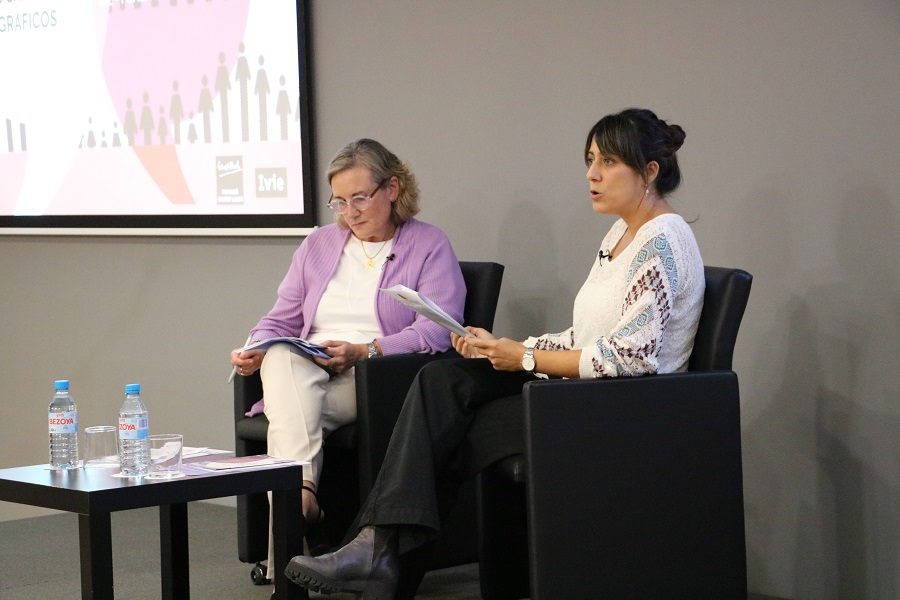
Aïda Solé-Auró and Mercedes Ayuso discuss the health, social, and economic ramifications of aging and longevity
In the second dialogue of the series "Socioeconomic challenges of demographic change", the two experts argued that public policies should be adjusted to the demographic changes that Spain is leading and that are changing the demographic pyramid
The series of dialogues “Socioeconomic challenges of demographic change”, organized by the Ivie and the Ernest Lluch Foundation, continued on October 26th of 2023 with a second discussion on “Longevity and aging: health, social and economic implications”, featuring Aïda Solé-Auró, Professor and Coordinator of the SocioDemographics Research Group (DemoSoc) at Pompeu Fabra University (UPF), and Mercedes Ayuso, Professor of Actuarial Statistics at the University of Barcelona (UB) and Member of the Pensions board in the BBVA Institute of Pensions. They highlighted the issue of pensions and the importance of long-term care in old age in their radiography of the demographic shift taking place in Spain.
“When our pension system was designed, it had a distribution that is in line with what the pyramid expects of us demographically, because the active population, with its contributions, was larger than the passive population,” Ayuso pointed out. However, currently the demographic composition has become misaligned, since “we have an active population that has to cover a passive population that has become much greater in size”, she continued. The ideal situation would be a sustainable, sufficient, equitable and efficient system. To obtain this, the system must adjust to the changing demographic reality, insists Mercedes Ayuso.
The mismatch can be explained by the fact that Spain is one of the leading countries in demographic change, along with other nations such as Italy and South Korea. In other words, its demographic structure is similar to what other populations will have in a few years to come. According to Solé-Auró, the aging of the Spanish population, can be explained by three factors: increasing life expectancy, declining birth rate and high immigration. Among the three concepts, the UPF researcher emphasizes the first one: “In the last 100 years, our life expectance has increased 40 years, and it appears that this trend will continue, with an additional two or three months for every year that passes”.
The inverted pyramid that currently describes Spanish demographics suggests new challenges beyond the pension dispute, such as the need to focus on the living conditions that people experience in their latter years. “The increase in longevity translates into an increase in morbidity, that is, we will live longer, but with poorer health,” explained Solé-Auró in relation to the fact that living longer lives means increasing the risk of getting sick and developing disabilities or other age-related limitations, such as loneliness.
Both speakers agreed on the need to implement public policies aimed at achieving quality aging. “The objective should be, at the same time as increasing the years of life, to shorten the time in which people live in substandard conditions”. In this regard, the two professors also agree that morbidity differs according to social conditions, which creates a scenario of “social inequalities in health and old age”. Factors such as gender, origin, socioeconomic status or educational level affect both people’s life expectancy and the probability of developing diseases.
The impact of technology advancement on aging was also discussed, specifically in relation to the objective of having a population of healthier older people. Recently through the use of technology, such as Hometech, the homes of senior citizens have been adapted to make their daily living easier. “The aim is to achieve useful but simple technological developments so that the elderly population can adapt to it,” says Ayuso.


